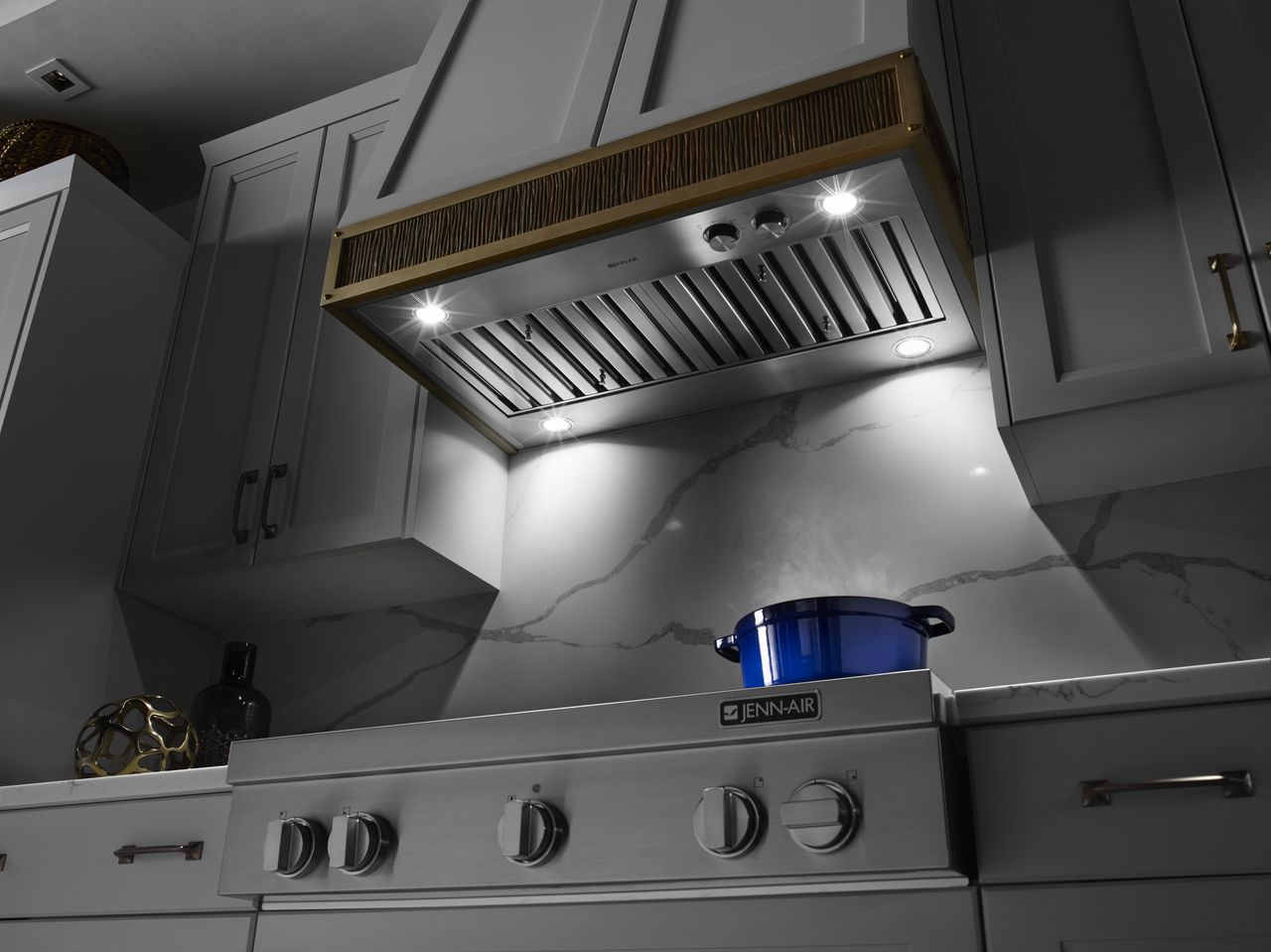
There are two main options when it comes to kitchen ventilation: an updraft range hood or a downdraft vent. Which is better depends on your needs, space, and budget.
Updraft ventilation consists of a vent (or hood) located over a range. Air is sucked up into the fan, passes through filters, and is either exhausted outdoors through a metal duct or re-circulated back into the kitchen. This type of ventilation is the most effective for removing air as the vent is directly above the cooking surface, and can be incorporated as a design element into your kitchen décor.
If you choose to re-circulate, you will need an additional replaceable charcoal filter to clean the air that returns to the kitchen.
The downside to updraft ventilation (pardon the pun) is keeping the apparatus clean: filters must be checked, cleaned and in some cases changed regularly and the vent may be difficult to clean. Some fans are noisy – do a sound-check before you buy. And the more sophisticated the design, the more costly the apparatus.
However, if you do a lot of grilling or frying, you should consider updraft ventilation, vented to the outside. Your kitchen will stay ultimately cleaner and fresher-smelling.
Downdraft ventilation is integrated into a base cabinet (counter or island) with vents located on the sides, back and in some cases the centre of the cooktop. Some models feature a separate blower with a vent that rises up behind the cooktop when you are cooking and then recedes back into the base when not in use. Some even come with a remote control!
If the foods you cook and the techniques you use generate more steam than anything else, or if you have an island cooktop in a location that can’t support a hood, a downdraft vent could be your best choice. Keep in mind that while this type of ventilation is easy to clean and effective for whisking away odours and smoke where a hood wouldn’t work, it does not exhaust steam from taller pots and pans very well. Also, it may “steal” some heat from your cooktop.
